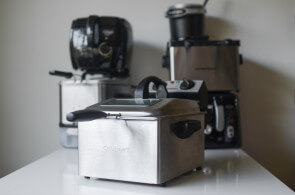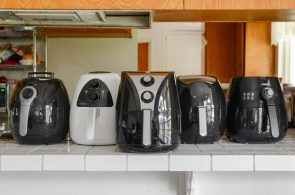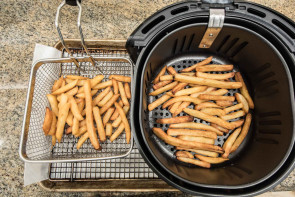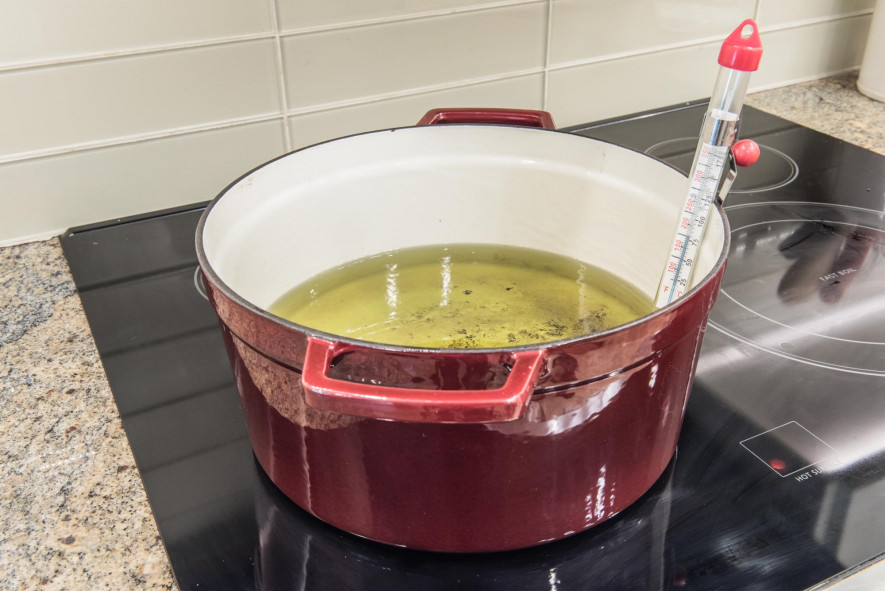
How To Deep Fry Without a Deep Fryer
If you love deep-fried foods and don’t want to buy one of our recommended electric deep fryers, you can still deep fry without a deep fryer on your stove top. An electric deep fryer eliminates the guesswork of knowing when the oil is hot enough, but if you follow these simple steps, you can enjoy fried chicken, French fries and, even, deep-fried Oreos in the same amount of time.
The right pot
A cast-iron skillet is great for frying anything, but it can make a greasy mess of your stovetop. You’ll need a deep, heavy-bottomed pot into which you can submerge food without the oil overflowing. Don’t use a nonstick pot, since the nonstick surface can’t hold up to high temperatures. A cast iron, enameled Dutch oven is an excellent choice. You can also use a heavy-gauge stainless steel stock pot, but the oil will leave a ring of buildup that’s hard to scrub clean.
The right oil
Peanut, safflower, sunflower and vegetable oil have high smoke points (the temperature at which the oil begins to smoke and burn), which is what you want for deep frying. Most deep frying is done at temperatures between 350 and 375 ℉. Peanut oil, coconut oil, vegetable oil and non-virgin olive oil have a high smoke point of 450 ℉, so they’re the better oils to use for deep frying.
Peanut, coconut and olive oils also impart their characteristic flavor onto food, which can be tasty in fried chicken and fish. But for French fries, stick with a neutral non-flavored oil, such as sunflower, safflower or vegetable oil.
The right thermometer
Although we typically recommend an instant-read thermometer for most cooking, you don’t want to risk burning yourself by periodically dipping the thermometer’s probe into hot oil. For deep frying, you’ll need a candy/deep fry thermometer that can be clipped onto the side of the pot.
Set up your fry station

You’ll need a slotted spoon or a spider to lower food into the oil and lift it out when it’s fried. You can also use a small strainer. Tongs are helpful for chicken.
Line a baking sheet with paper towels. Put a drying rack turned upside down onto the paper towels. This allows the fried food to drain oil without getting stuck to the paper towels and pooling in oil.
Have a bowl of salt nearby. You’ll want to season the fried food as soon as you place it on the drying rack. Don’t season the food before you fry.
Method
- Pour the oil into the pot so it’s slightly more than half filled.
- Attach the thermometer to the side of the pot, and adjust it so the probe is midway in the oil and does not touch the bottom of the pot.
- Turn on the heat to medium-high and heat the oil to 350 ℉ (176 ℃).
- While the oil heats, pat dry the food you’re frying with paper towels. (Unless, of course, you’re deep frying batter-dipped chicken.)
- When the oil reaches 350 ℉ (176 ℃), using your utensil, slowly lower the food — a few pieces at a time — into the oil. The temperature of the oil will drop every time food is added, so adjust the heat to keep the oil between 340-350 ℉ (171-176 ℃) during the frying process.
- Using your utensil, gently move the food in the oil so pieces don’t stick together.
- When the fried food is golden brown, lift it out of the oil, and lay it on the drying rack. Season with salt.
- Repeat the process until everything is fried.
- Turn off the heat and let the oil completely cool.
Filter and store the oil
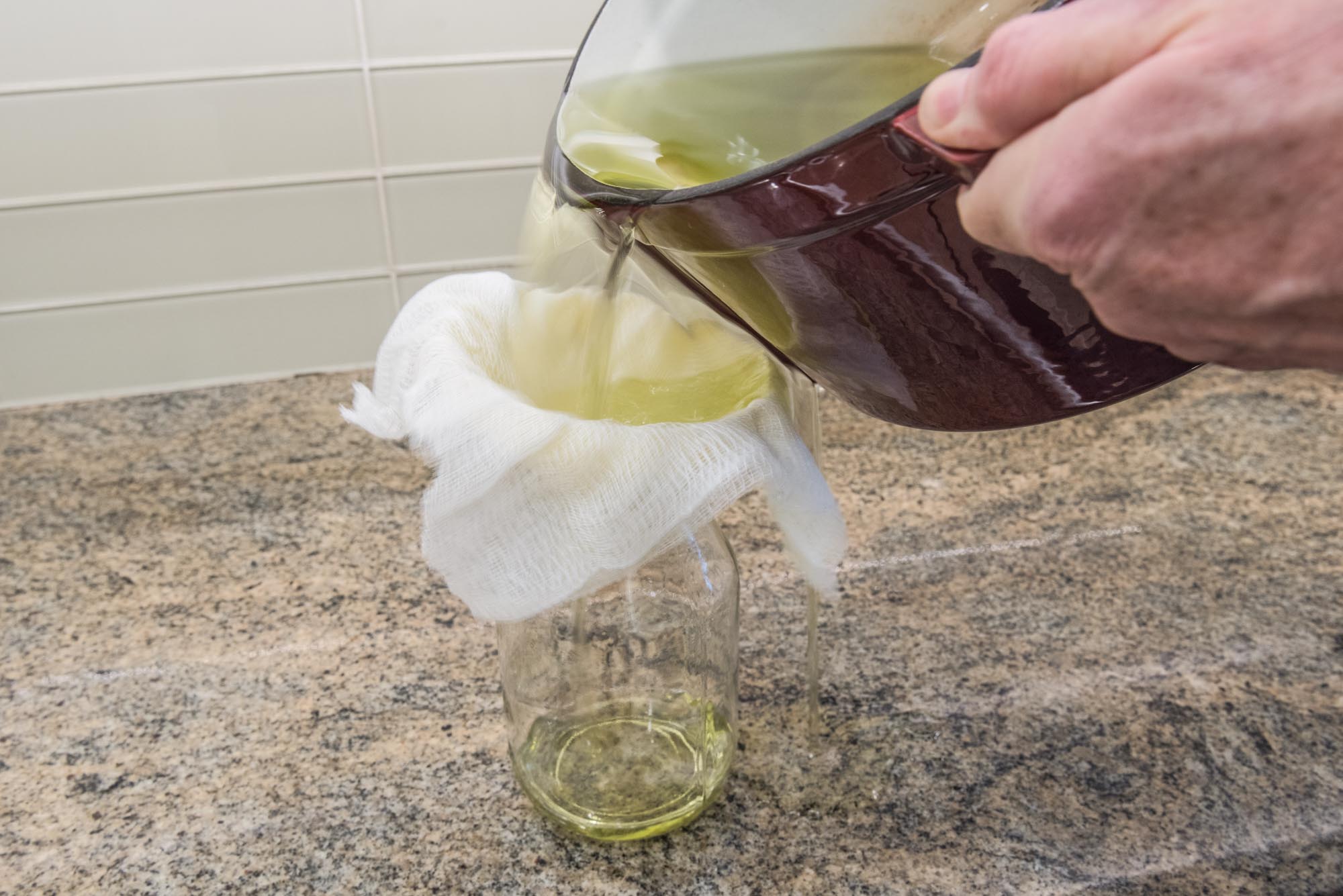
You’ll be able to use the oil for three to four more frying sessions. Line a funnel with cheesecloth, and put the spout of the funnel into the oil’s original container or a large mason jar. Pour the oil through the funnel to filter out browned bits. Seal the container and refrigerate. Most used cooking oil will last three months in the refrigerator. However, if you notice it has a bad odor and taste or if it’s cloudy, the USDA advises disposing it.


